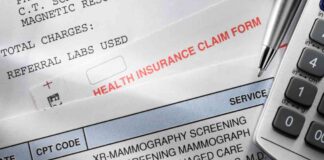Introduction: The Impact of GLP-1 Weight Loss Drug on the U.S. Economy
The rise of the GLP-1 weight loss drug has sparked interest not only in the health and wellness industry but also in the economic sector. As companies like Eli Lilly reduce prices and make the drug more accessible to patients, there is a growing anticipation of how this could potentially boost the U.S. economy. With the increasing focus on weight management and the potential benefits of the GLP-1 drug, it is essential to explore how this trend could impact various aspects of the economy.
The Economic Benefits of the GLP-1 Weight Loss Drug
The introduction of the GLP-1 weight loss drug has the potential to generate significant economic benefits for the United States. As more individuals are able to access and afford this medication, there is a projected increase in consumer spending on healthcare products and services related to weight management. This surge in demand can lead to job creation in the pharmaceutical industry, as companies ramp up production to meet the growing needs of the market.
Moreover, the success of the GLP-1 weight loss drug could also have a positive impact on the healthcare sector as a whole. By promoting healthier lifestyles and aiding in weight management, this medication may help reduce the prevalence of obesity-related diseases and their associated healthcare costs. This, in turn, could lead to a decrease in healthcare spending and a more efficient allocation of resources within the industry.
The Role of Pharmaceutical Companies in Boosting the Economy
Pharmaceutical companies like Eli Lilly play a crucial role in driving economic growth through the development and distribution of innovative medications such as the GLP-1 weight loss drug. By reducing prices and making the drug more accessible to patients, these companies are not only improving public health but also stimulating economic activity. The affordability of the medication can encourage more individuals to seek treatment for weight management issues, leading to increased sales and revenue for pharmaceutical companies.
Additionally, the success of the GLP-1 weight loss drug can have ripple effects on other sectors of the economy. For example, as more individuals achieve their weight loss goals and improve their overall health, there may be a decrease in absenteeism and an increase in productivity in the workforce. This can result in a more competitive and efficient labor market, ultimately benefiting the economy as a whole.
The Future Outlook for the U.S. Economy with the GLP-1 Weight Loss Drug
Looking ahead, the future of the U.S. economy with the introduction of the GLP-1 weight loss drug appears promising. As more individuals embrace this medication as a tool for weight management, there is a potential for significant improvements in public health outcomes and healthcare costs. The increased focus on preventive care and wellness can lead to a healthier population overall, reducing the burden on the healthcare system and freeing up resources for other critical needs.
Furthermore, the success of the GLP-1 weight loss drug can fuel innovation and investment in the pharmaceutical industry, creating a ripple effect that extends to other sectors of the economy. With a stronger focus on research and development in the healthcare sector, there is potential for job creation, technological advancements, and overall economic growth. By harnessing the benefits of this groundbreaking medication, the U.S. economy can continue to thrive and evolve in a more sustainable and resilient manner.
In conclusion, the rise of the GLP-1 weight loss drug has the potential to not only transform the healthcare landscape but also to boost the U.S. economy in significant ways. By promoting healthier lifestyles, reducing healthcare costs, and driving innovation in the pharmaceutical industry, this medication has the power to create lasting positive impacts on both public health and economic prosperity. As companies like Eli Lilly continue to prioritize accessibility and affordability, the future looks bright for the economy and the well-being of the population as a whole.

















